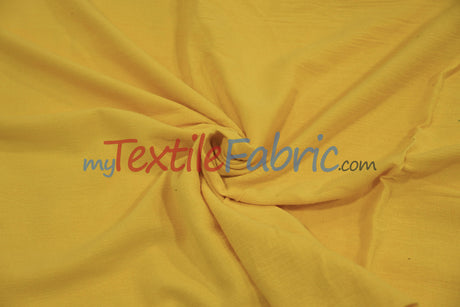When building a cohesive and durable brand, cotton fabric plays a central role. Your choice of material impacts how garments feel, wash, and wear over time. Whether you are designing premium t‑shirts, fashion lines, or sustainable basics, knowing where to source the best cotton fabric will elevate your business. Let’s talk through the steps and what to look for as a brand owner.
Start with Your Brand Identity
Before hunting for suppliers, ask yourself what your brand represents. Are you going for softness, durability, organic credentials, or eco‑friendly appeal? Cotton clothes that keep their shape and color week after week often come from high‑grade cottons like long staple or Pima. Seasonal breezy cotton or cotton‑linen blends work well for laid‑back upscale looks. Defining your core values helps you prioritize qualities in your fabric sourcing.
Know the Difference: Fiber, Weave, and Finish
Cotton comes in many types. Each variation affects how your garment looks and performs. Some common categories include:
- Long staple cotton: Known for softness and minimal pilling. Ideal for premium basics or luxury lines.
- Organic cotton: Grown without harsh chemicals. Perfect for brands with ethical and environmental standards.
- Cotton‑lapsan or blends: These offer structure or drape depending on fiber mix. Used in shirting or light outerwear.
Beyond fiber, weaving matters too. Poplin, jersey, sateen, twill, and chambray each deliver unique texture and durability. Pay attention to finishes like mercerization, reactive dye, or enzyme wash. These treatments can improve colorfastness, softness, or sheen depending on your brand aesthetic.
Where to Source Cotton Fabric
Once you know your fiber and weave preferences, it’s time to find suppliers. Here are two common routes brands take:
- Domestic Suppliers
- Working with local mills or distributors has benefits. You can easily verify quality, request small runs, and often get faster delivery. Many garment makers value the transparency and reliability offered by local sourcing.
- Overseas Mills
- If you need large volumes or want specialty finishes at competitive prices, international suppliers may be a good fit. Larger mills often offer wider widths and custom dye lots—plus the ability to match shades across large collections. Just be sure to request samples, lab dips, and shipping details upfront.
Questions to Ask Before Committing
Before you place a bulk order for cotton fabric, make sure you have clarity on these key points:
- Minimum order quantity. Is it viable for your production volume?
- Bolt width and roll length. Does that work for your pattern layouts?
- Finish options. Can you request enzyme wash, tape dye, or reactive dye lots?
- GSM and weight range. Does it suit the season and your intended garments?
- Availability of lab dips or color‑matched swatches.
- Environmental certifications if you aim for sustainable branding.
- Return and defect policies. What happens if fabric fails QC?
Asking these questions helps avoid costly surprises down the line and ensures consistency across your collections.
Order Samples, Test Them Carefully
Never skip fabric testing. Ask for small swatch packs or pre‑cuts of different weaves and weights. Here are some specific tests that matter:
- Wash and tumble dry cycles to check shrinkage and colorfastness.
- Hand stretch and recovery tests for knit fabrics.
- Seam strength and stitch pull tests.
- Slip and transparency checks for lighter cottons.
- Visual sheen evaluation under photo booth lighting or retail lighting.
Testing fabric ahead of larger orders allows you to refine your specs and avoid disappointment once your order ships.
Tools and Measurements You Need
Having this data on hand improves your sourcing decisions:
- GSM (grams per square meter) or, in the US, ounces per square yard.
- Thread count for fine cottons like sateen or shirting.
- Shrinkage percentage after wash.
- Color fastness rating under UV or laundering.
- Width in inches or centimeters so you can plan for pattern layouts.
Tracking these metrics gives you consistent quality control. It also helps you compare wholesalers and mills based on real performance rather than feel alone.
Sustainable and Ethical Considerations
For many brands, sustainability has moved beyond buzzword territory. Customers increasingly expect transparency when buying cotton clothes. If you want to stand out, look for certifications like:
- GOTS (Global Organic Textile Standard)
- Fair Trade or Oeko‑Tex Standard 100
- Better Cotton Initiative (BCI)
These certifications signal ethical sourcing and lower environmental impact. Brands that can showcase eco‑friendly practices gain trust and repeat customers.
How to Plan Your First Orders
Once you find a supplier and test samples, start small. Order a few rolls or bolts of your preferred cotton fabric for prototyping. Use that yardage for garment samples, fit sessions, and photo shoots. That helps you confirm that the final product meets your brand expectations before committing to larger quantities.
Keep a buffer reserve if you plan multiple color ways or seasonal variations. Cotton fabric dyed in different lots can show slight shade differences. Ordering enough for future restocks helps keep collections consistent.
Displaying Fabric and Educating Customers
If you are a boutique or direct‑to‑consumer brand, let your customers feel the fabric. Display fabric swatches or information cards explaining fiber origin, weave type, care details, and washing properties. Tell the story of your cotton—from farm to wardrobe—to reinforce perceived value of your garments.
Final Thoughts
Sourcing high‑quality cotton fabric takes more than just choosing a soft material. It involves careful planning, testing, and open communication with suppliers. Whether you want breathable tees or structured shirting, cotton fabric supports everything from minimalist staples to eco-conscious collections.
By partnering with reliable suppliers, requesting accurate data, and staying consistent in your process, you set your brand up for long-term success. Cotton fabric has shaped wardrobes for centuries. When you make wise sourcing choices, it shapes your brand legacy too.





Comments